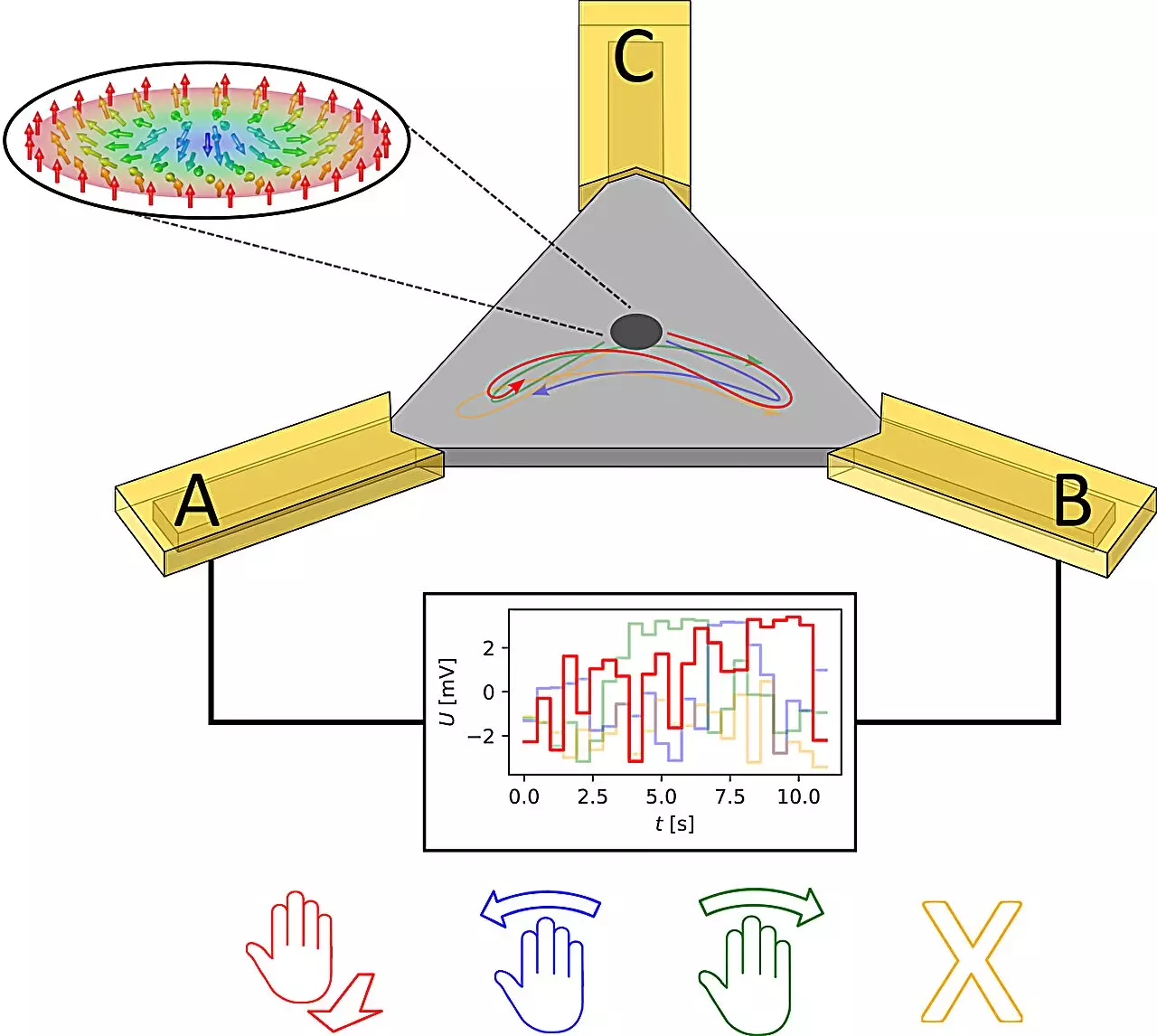In the ever-evolving field of computing, researchers are constantly pushing boundaries to develop systems that are not only efficient but also capable of mimicking complex human interactions. A groundbreaking study emerging from Johannes Gutenberg University Mainz (JGU) has taken a significant leap forward by employing Brownian reservoir computing to accurately detect and recognize hand gestures, utilizing the unique properties of skyrmions. The work, which showcases the potential of combining physics with computer science, opens up new avenues for energy-efficient and precise gesture recognition systems.
At the core of this innovation lies Brownian reservoir computing, a model that resembles traditional artificial neural networks but with substantial advantages. Unlike conventional neural networks, which often require intensive training and high energy consumption, reservoir computing offers a more streamlined approach. According to Grischa Beneke, a researcher with Professor Mathias Kläui’s team at JGU, the beauty of reservoir computing is in its simplicity; it primarily requires the training of a straightforward output mechanism rather than delving deep into intricate computational processes. This results in a system that can effectively recognize complex input signals with significantly reduced energy expenditure.
Detecting Hand Gestures with Precision
The researchers conducted an innovative experiment where they utilized Range-Doppler radar to capture basic hand gestures—such as swipes left or right—and subsequently converted the radar data into voltages. This input is fed into a reservoir composed of a multilayered thin film stack, strategically configured into a triangular shape. What’s particularly fascinating is that the movement of skyrmions, which are chiral magnetic whirls, is initiated through electric signals at specific contact points of this triangular reservoir. Beneke articulates that these movements enable the system to decode the gestures captured by the radar, translating physical actions into digital recognition with remarkable accuracy.
Skyrmions are increasingly recognized for their robust potential in various computing applications, including novel data storage systems. Professor Kläui emphasizes that the initial expectation of skyrmions being used exclusively for data storage has expanded, as their adaptability and access to random motions make them exceedingly useful in computing contexts. This versatility is critical, offering an alternative to typical silicon-based technologies that often struggle with energy efficiency and processing speed. By leveraging skyrmions, the JGU researchers illustrate that energy consumption can be drastically minimized while still achieving high levels of computing performance.
Comparison with Traditional Software Approaches
When juxtaposed with traditional software-based gesture recognition systems, Brownian reservoir computing has revealed comparable—and sometimes superior—accuracy in recognizing gestures. This advancement is monumental, as it suggests a viable alternative path for future computing that circumvents the heavy energy demands posed by conventional methods. The study highlights the synergistic relationship between radar data collection and the intrinsic dynamics of the reservoir, indicating a unique capability to process information efficiently in real time.
Future Prospects and Challenges
Despite the promising results, the researchers acknowledge that there’s room for improvement, particularly in enhancing the read-out processes that currently rely on magneto-optical Kerr-effect (MOKE) microscopy. The incorporation of a magnetic tunnel junction could potentially streamline the system’s overall size and efficiency. There’s an exciting prospect in exploring how these emerging technologies can be integrated into commonplace devices, paving the way for intuitive interfaces that resonate with users on a fundamental level.
The research conducted at JGU has provided a fascinating glimpse into the potential of Brownian reservoir computing and skyrmions for advancing gesture recognition technologies. By emphasizing energy efficiency and precision, the study sets a formidable foundation upon which future innovations can be built. As technology continues to advance, the combination of physical theories with computing models may not only result in smarter systems but also redefine how we interact with the digital world. The prospect of harnessing such systems in consumer electronics could significantly reshape our everyday experiences, paving the way to a future where technology seamlessly integrates into our daily lives.


Leave a Reply